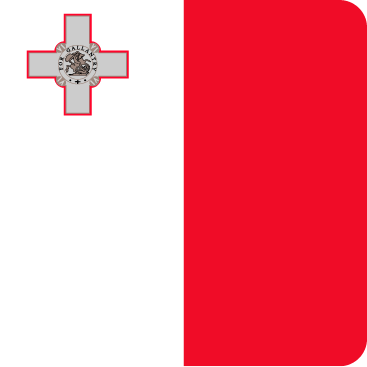
HostingB2B » Network Status Check (Looking Glass)
Looking Glass for Real-Time Network Diagnostics and Latency Tests
HostingB2B offers a convenient looking glass tool to help users troubleshoot network issues and test network performance at our datacenter locations.

What is Looking Glass?
Our looking glass is a tool provides ping, mtr, and traceroute functionality to enable users to diagnose network problems and gain insight into the network path and performance.
Whether you are a customer or simply interested in learning more about our network, our looking glass tool is a valuable resource that provides transparent and detailed information about network performance and connectivity.
Ping
Ping is a network tool that tests connectivity by measuring the round-trip time for packets sent from the originating host to a target host.
MTR
MTR (My Trace Route) is a comprehensive network diagnostic tool that combines the functionality of traceroute and ping to provide detailed information about network performance and connectivity.
Traceroute
Traceroute is a network diagnostic tool that tracks the path of data packets from an originating host to a destination host, providing a detailed analysis of network connectivity and potential issues.
Check Ping, MTR, and Traceroute
Network Status Check for Our Datacenter Locations
By simply clicking on the flag of the country where you want to check the network status you to access the looking glass tool and perform ping, mtr, and traceroute tests, providing you with valuable insights into the performance and connectivity of our network infrastructure.

Ensuring Network Reliability and Performance
At HostingB2B, we understand that network reliability and performance are critical to the success of any online business. That's why we have invested heavily in our network infrastructure and offer a range of tools and resources to help our customers optimize their network connectivity. Our looking glass tool is one such resource, providing users with the ability to troubleshoot network issues and test network performance at our datacenter locations.
Our looking glass tool is just one of the many ways we strive to provide our customers with the highest level of support possible. From our state-of-the-art datacenter facilities to our expert technical support team, we are committed to ensuring that our customers have access to the resources they need to succeed online.
FAQ
Find answers to some frequently asked questions about Network Status Check :
A Looking Glass is a remote server used in networking that enables users to view routing data and run simple network diagnostic commands from the viewpoint of the network in which the Looking Glass is situated. In essence, it serves as a restricted, read-only gateway to the network infrastructure and routers of the company that operates it, which is usually a hosting company such as HostingB2B, an Internet service provider (ISP), or a network service provider (NSP).
This tool helps users understand how their data moves to and from specific locations by evaluating network latency, confirming routing paths, and troubleshooting connectivity issues from a variety of geographic points on the internet.
There are generally four primary categories of IP addresses when categorised by their scope or access:
- Devices that are directly reachable from the internet are given public IP addresses, which are globally unique IP addresses. They facilitate device-to-device communication over the global internet.
- Non-routable IP addresses designated for use in private networks, such as home networks and business intranets, are known as private IP addresses. They are usually converted to a public IP address by a router for external communication because they are not directly reachable from the internet.
- Static IP addresses are permanent, fixed addresses that don’t change over time. They are frequently utilised for servers, printers, or other devices needing constant external access and are manually configured or assigned by a DHCP server for particular devices.
- Temporary IP addresses known as “dynamic IP addresses” are given to devices automatically by DHCP servers and are subject to periodic change. They provide flexibility and effective IP address allocation, and consumer devices frequently use them.
Within the IPv4 protocol, a 192.168 IP address (more precisely, one that falls between 192.168.0.0 and 192.168.255.255) is a member of a reserved block of private IP addresses. These addresses cannot be directly accessed from outside of a local network since they are not routable on the public internet.
Rather, they are employed for internal communication in private networks, like intranets in large corporations, small business networks, and home Wi-Fi networks. For instance, devices on your network are usually assigned IP addresses beginning with 192.168 by your home router. The limited supply of public IPv4 addresses is preserved thanks to this system.
An ISP in Tier 1 A Tier 1 Internet service provider hosts the network diagnostic tool Looking Glass. At the top of the internet hierarchy are Tier 1 ISPs, which are networks that, mainly through settlement-free peering agreements with other Tier 1 providers, can reach every other network on the global internet without having to pay for IP transit.
Because it is located on the internet’s backbone, a Looking Glass from a Tier 1 ISP offers a special perspective for network diagnostics. It provides extremely dependable insights into global routing and connectivity issues by enabling users to perform ping, traceroute, and BGP route lookups directly from a provider with a global reach with the fewest number of network hops.
An illustration of a A web page called Looking Glass, which is offered by hosting companies such as HostingB2B, enables you to conduct network tests from the locations of their data centres. For example, you could choose a Cyprus-based server by going to HostingB2B’s Looking Glass page. After that, you could type in the IP address of your website and select “traceroute.”
The full network path, latency at each hop, and any packet loss would then be displayed by the Looking Glass as it ran the traceroute command from the Cyprus data center’s server to your website. This enables you to identify possible connectivity problems from that particular area and comprehend how traffic from Cyprus arrives at your website.
The term “Looking Glass” describes a server-based diagnostic tool that offers a “view” or “reflection” into the network’s connectivity and routing data from a distance in the context of computer networking. Because it lets you see how the network “sees” other areas of the internet or how traffic would flow from its vantage point, the name is similar to that of a mirror (“looking glass” being an outdated term for a mirror).
With its ability to provide external insight into network performance, route advertisements, and possible bottlenecks without requiring direct administrative access to the network’s core devices, it is an essential tool for transparency and troubleshooting.
Remote network diagnostics and troubleshooting are the main uses for the Looking Glass. Among its primary uses are:
- Identifying Problems with Connectivity: determining whether a server or website can be accessed from various geographic locations.
- Finding Network Bottlenecks: Traceroute can be used to identify network path delays or packet loss.
- Checking Routing Data: Checking if IP addresses and network prefixes are being advertised correctly via BGP (Border Gateway Protocol) on the internet.
- Evaluating Latency: measuring the time it takes to get from the Looking Glass server to different locations.
- Solving BGP Peering Problems: Understanding how various autonomous systems (AS) are sharing routes.
It provides invaluable transparency and helps network professionals and users understand and resolve network performance problems.
“Looking Glass” gets its name from the archaic word for a mirror. The tool offers a “reflection” or a “view” into a network from an outside viewpoint, so the analogy is appropriate. A Looking Glass server lets you see how a distant network—the network that houses the Looking Glass—perceives and engages with other areas of the internet, much like a mirror lets you see yourself.
It assists in offering an unbiased, outside viewpoint for network diagnostics, exposing connectivity details and routing routes that may not be visible from the viewpoint of your local network.
The terms “types of IP addresses” and “types of intellectual property” are frequently used interchangeably. On the other hand, when discussing IP address types in networking, they typically fall into groups according to version, scope, and assignment. Although the “7 types” are not universally accepted, common classifications that go beyond IPv4/IPv6, public/private, and static/dynamic include:
- Loopback IP: used to test network applications locally (e.g., 127.0.0.1 for IPv4).
- Data can be sent to every device on a network using broadcast IP.
- For one-to-many communication among a particular set of devices, multicast IP is utilised.
- For one-to-one communication between a single source and destination, Unicast IP is the most widely used type.
- Class A, B, C, D, and E (IPv4 classes): CIDR has largely replaced this historical address-range-based classification.
Thus, rather than networking IP addresses, the phrase “7 types of IP” may be referring to intellectual property (patents, copyrights, trademarks, etc.).
The most appropriate kind of IP address is determined solely by its intended use; there is no such thing as the “best” kind.
- Any server or device that must be directly reachable from the internet (such as mail servers or web servers) requires a public IP address.
- For internal network communication, private IP addresses work best because they save public IP space and add an extra degree of security.
- For servers (such as those provided by HostingB2B for dedicated or VPS hosting) or network devices (such as web servers and VPN endpoints) that need a constant, unchanging address for dependable access, static IP addresses are perfect.
- Dynamic IP addresses are best for end-user devices (laptops, smartphones) where a constantly changing address is fine and simplifies network management for ISPs.
Each type serves a specific purpose in the overall architecture of the internet and private networks.
Powering the Web: Our Latest Articles
How To: Unlock the Power of Web Solutions

SSL Certificate Renewal (DNS Re-Issue Required)

How to Host Your Platform in Malta with Zero Downtime Migration

How to Migrate to a Compliance-Ready Dedicated Server with Zero Downtime

- Stratigou Timagia Avenue 18, Omega Business Center 2nd Floor, 6047, Larnaca/Cyprus
- +357 24 205888
- admin[at]hostingb2b.com
- sales[at]hostingb2b.com
HOSTING
SOLUTIONS


Security
Application Hosting
Solutions as a Service
Networking
Datacenter & Network Information
Company Blog
Legal
Company Info
- About Us
- Certification & Awards
- Investor Relations
- Contact Us
Careers & Affiliates
Contact Info
- +357 24 205888
- admin[at]hostingb2b.com
- sales[at]hostingb2b.com









"Their dedication to ensuring customer satisfaction is evident. Its comforting to know that there's an responsive support team available, for assistance. Without hesitation I highly recommend Hosting B2B Cyprus for their service well as the exceptional support offered by George Sarris. Thank you for making our hosting experience a positive one."
"I have used these chaps for about a year now, and their response times and knowledge of their services is really excellent. The most recent time I needed to contact them was around adding in a temporary server just for a few days - they were so helpful and quick to respond. Just what I wish so many other companies would do (take note, AWS!!!)"
"Great company! It was especially pleasant to work services sales, who made every effort to get everything we needed on time and get a positive result in the end. Not everything went smoothly at the beginning, but Marina S. did her best to solve the initial problems. After a few months, I can say that I'm definitely satisfied."